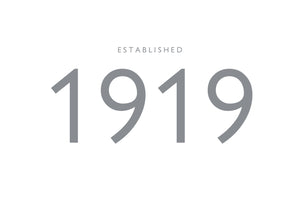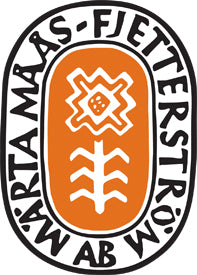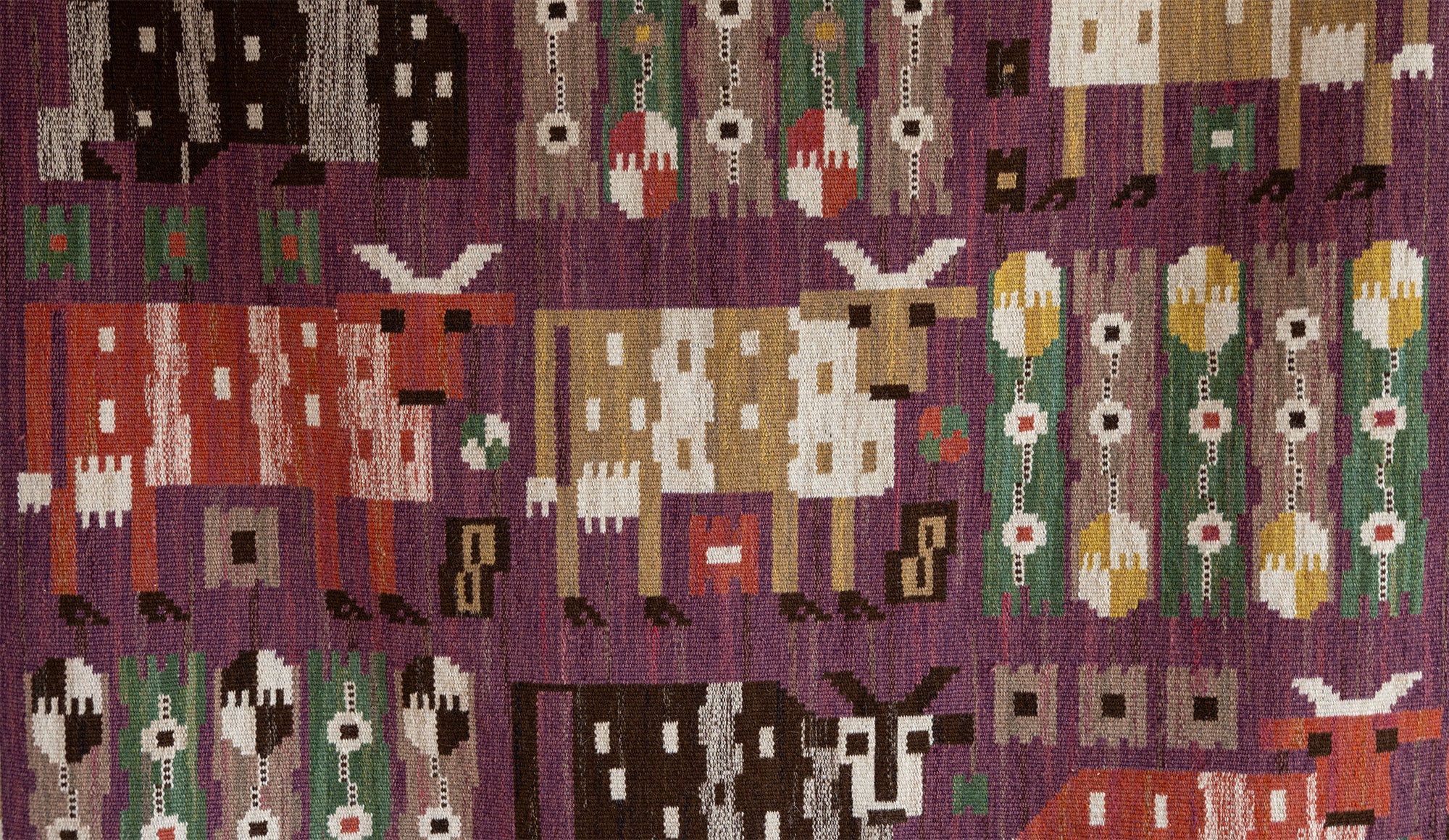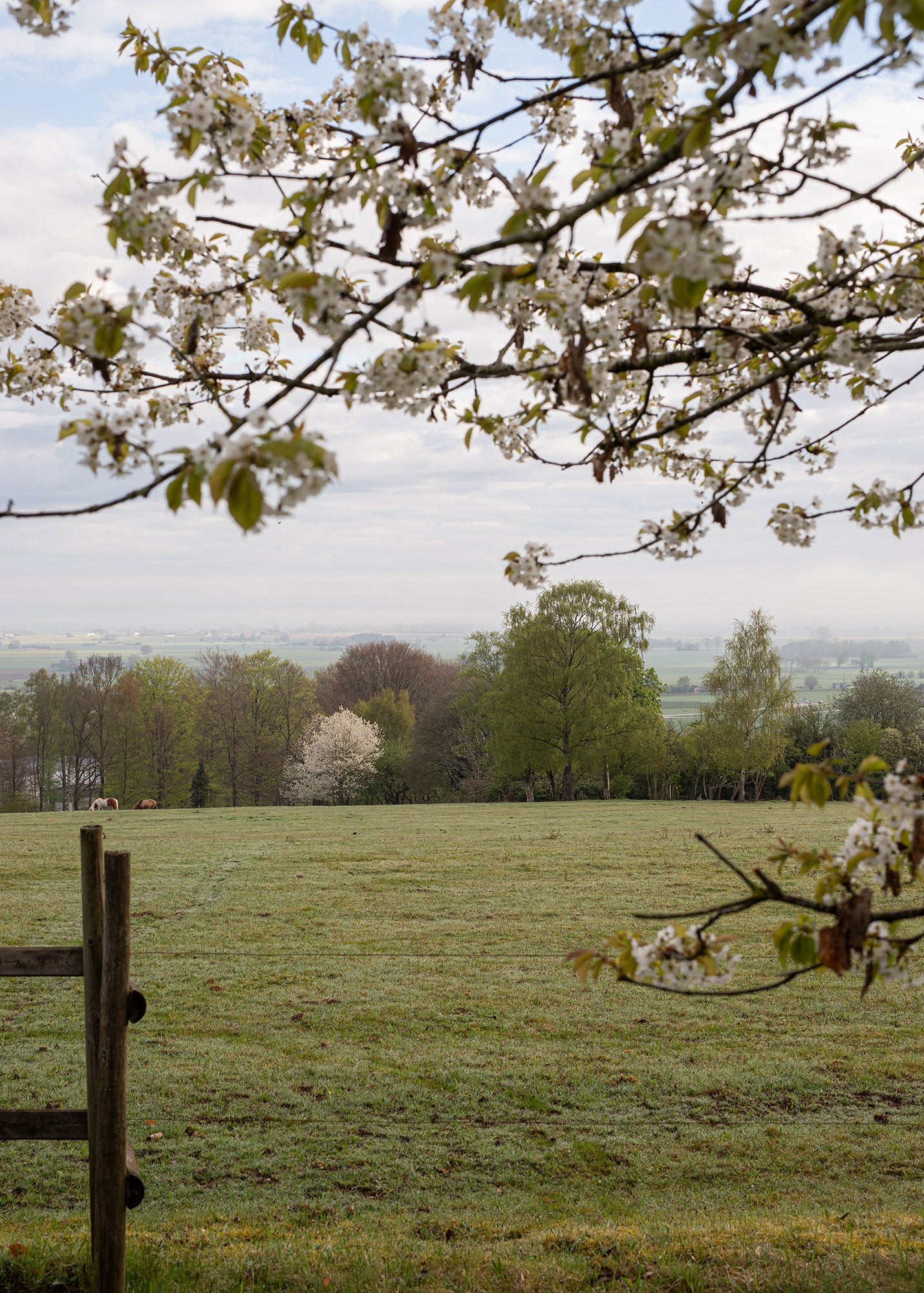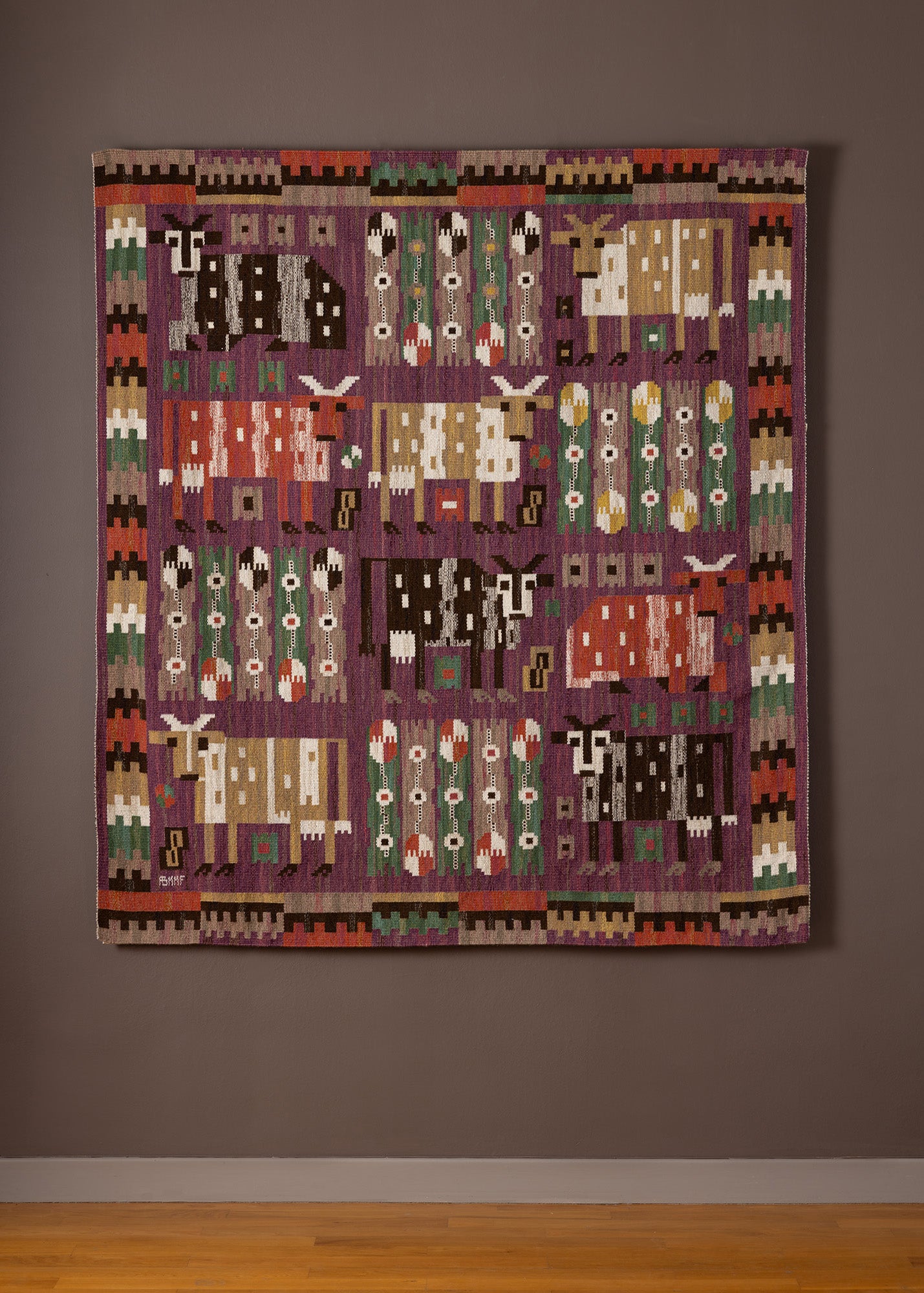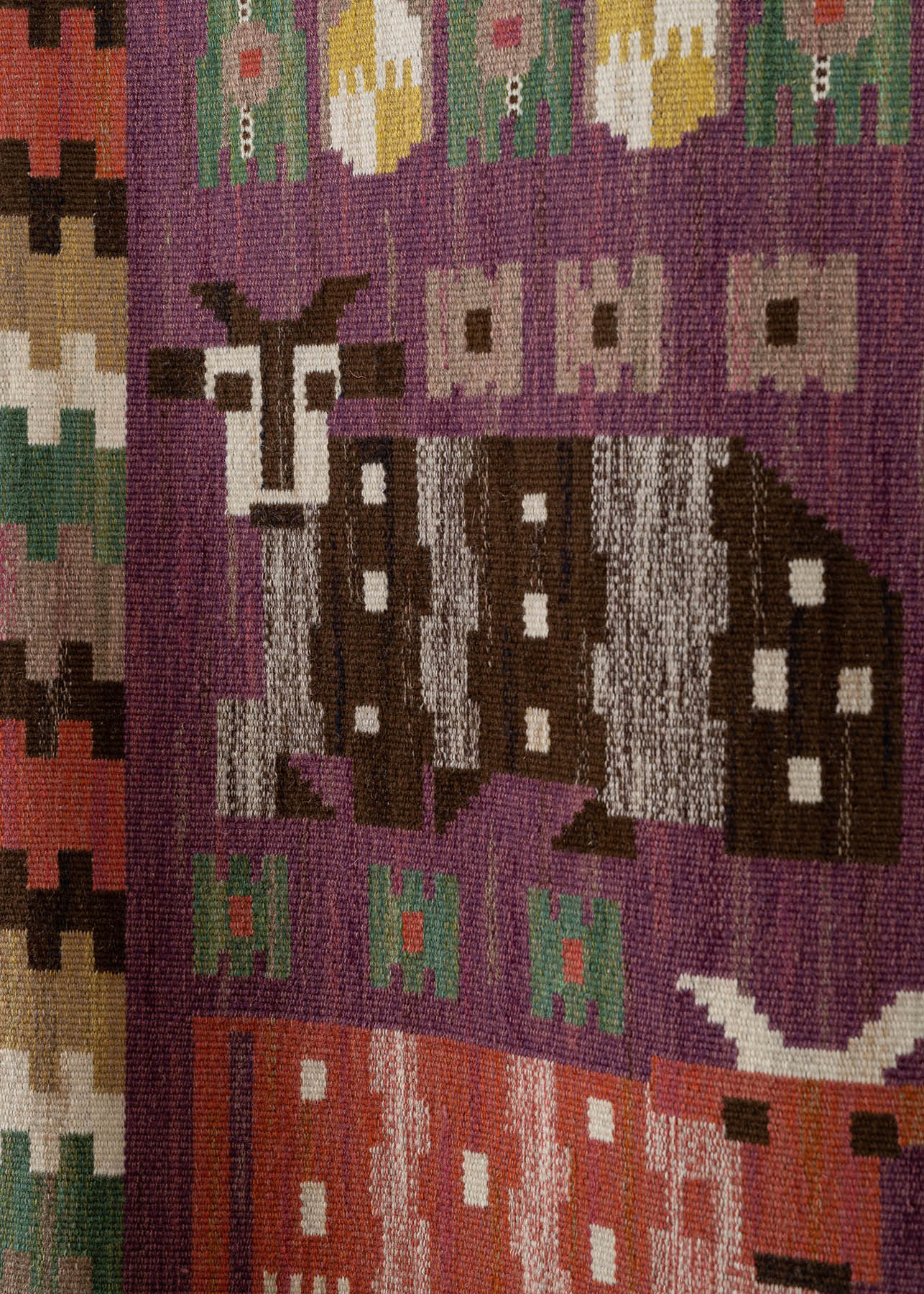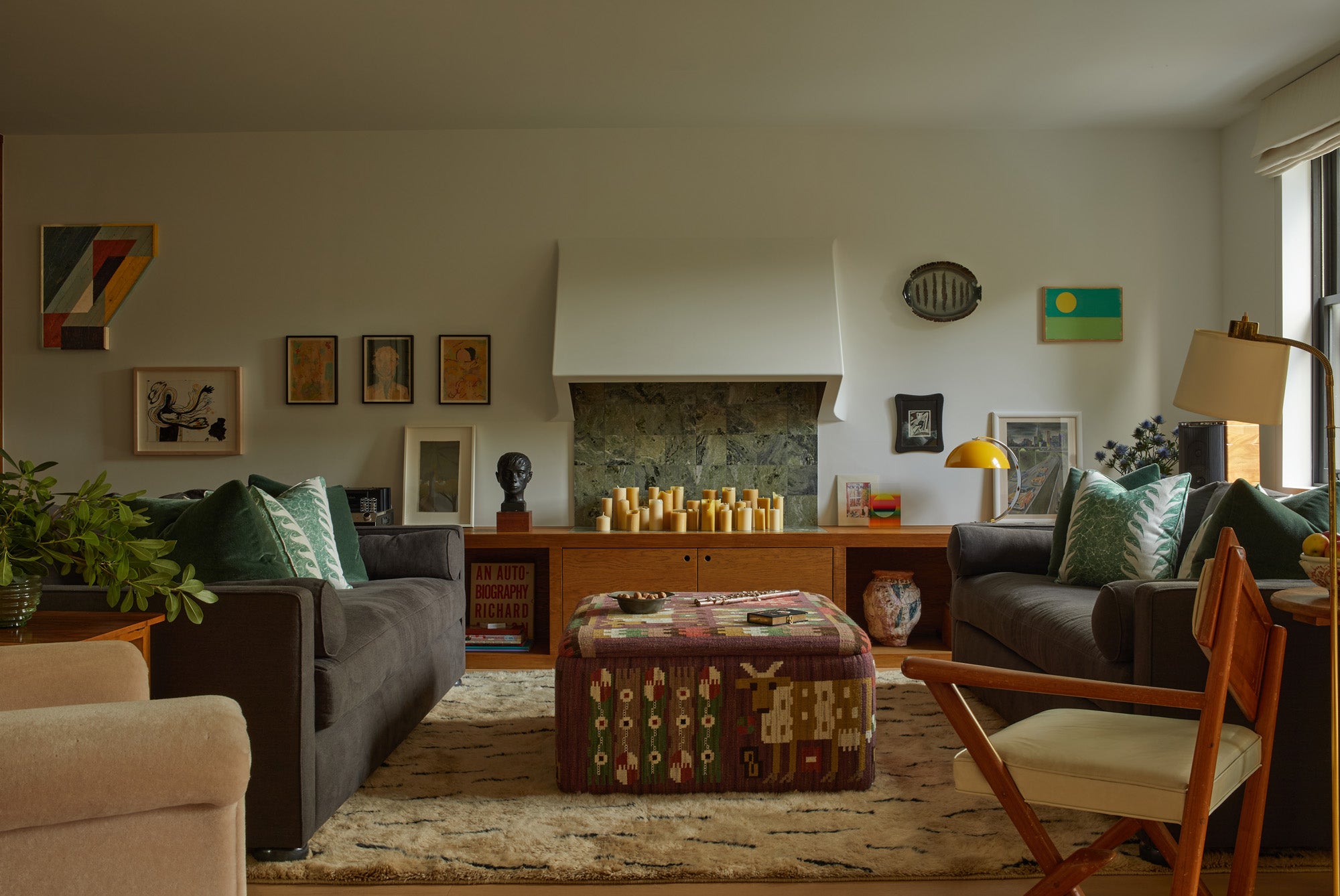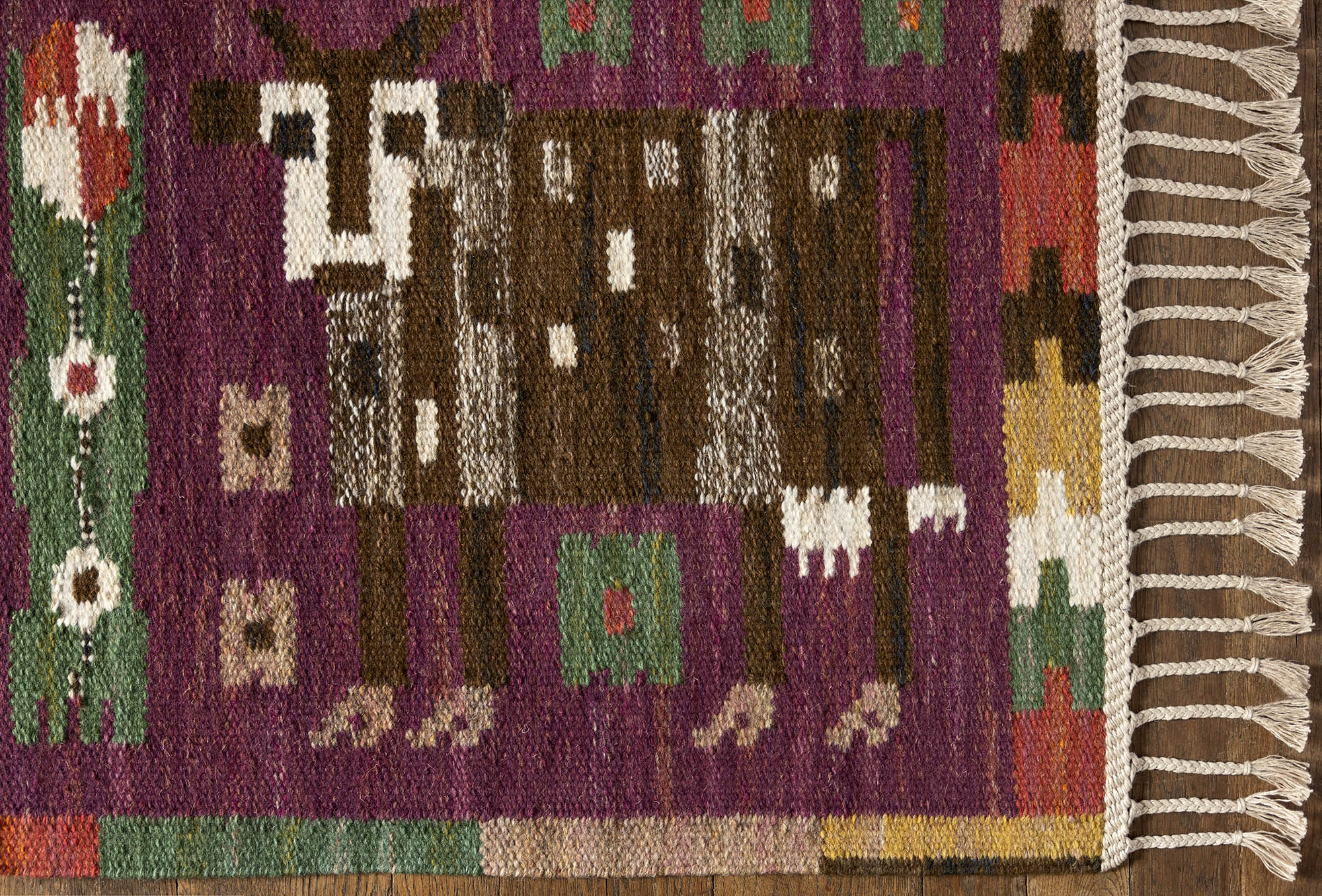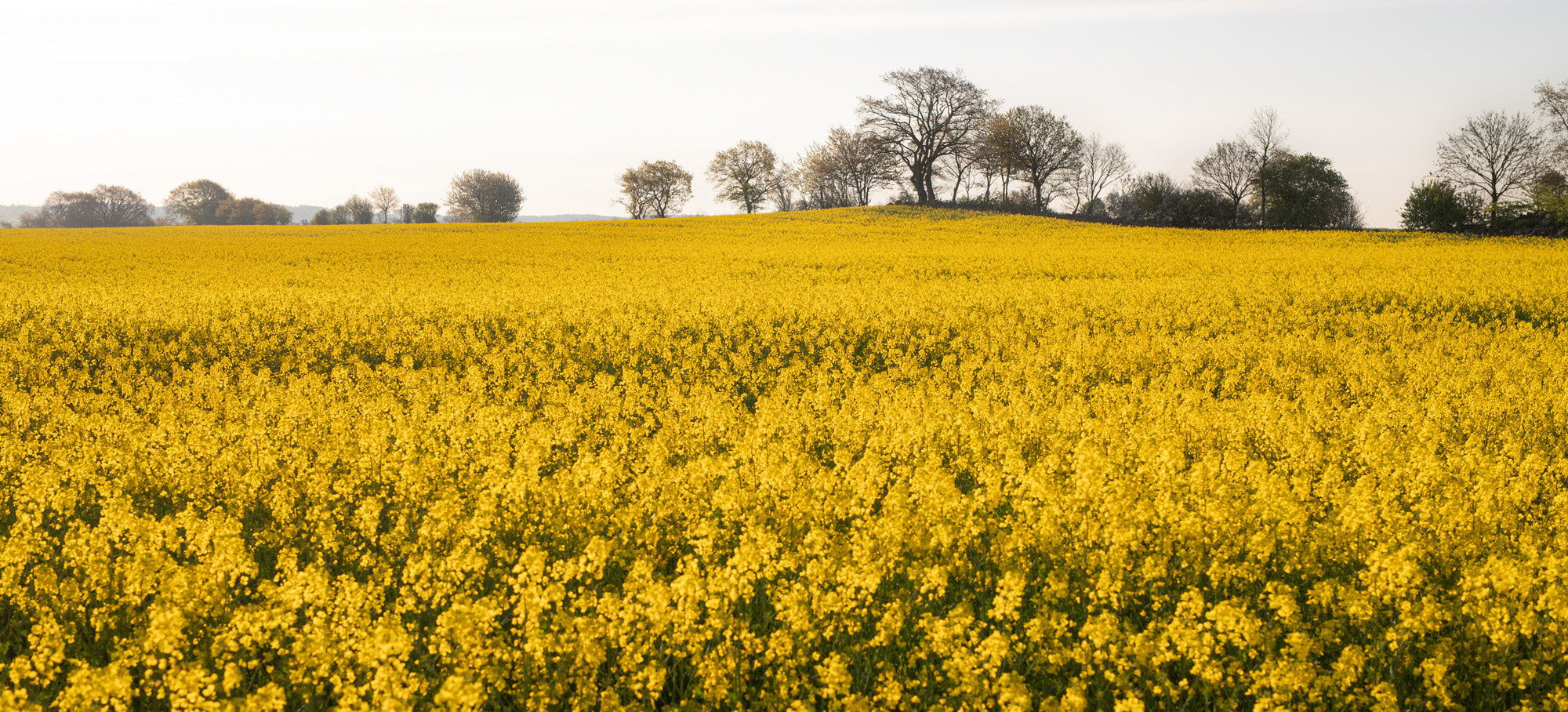The Cows
In 1930, modernism made its breakthrough in Sweden with the landmark Stockholm Exhibition. This era marked a shift in aesthetics—moving away from ornamentation toward a more functional and accessible design language.
___
Amidst this wave of radical change, Märta Måås-Fjetterström created her whimsical tapestry Korna (The Cows). In the piece, three different breeds of cows are arranged in a playful, geometric pattern, grazing among blooming flowers. Scattered throughout the meadow are piles of cow dung—just as one might find in the fields surrounding the MMF studio.
___
When asked why the cows graze on a purple field instead of a green one, Märta replied, “A green field would be too obvious,” demonstrating her signature ideal of always choosing her own point of view.
